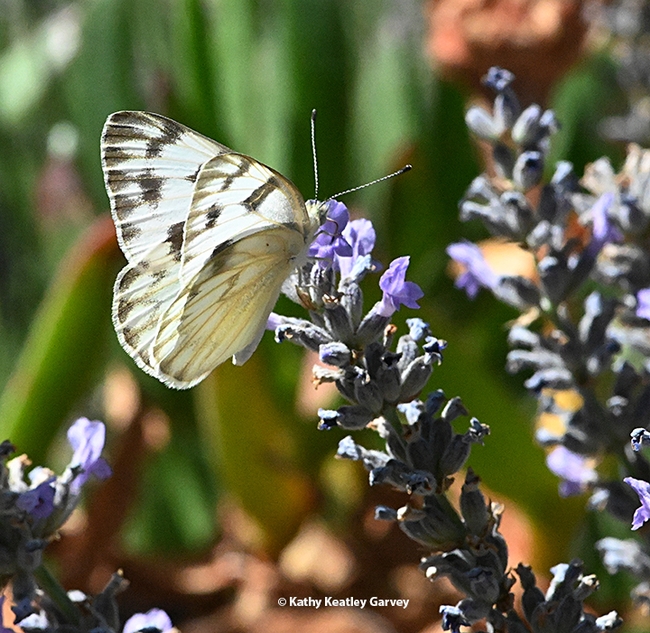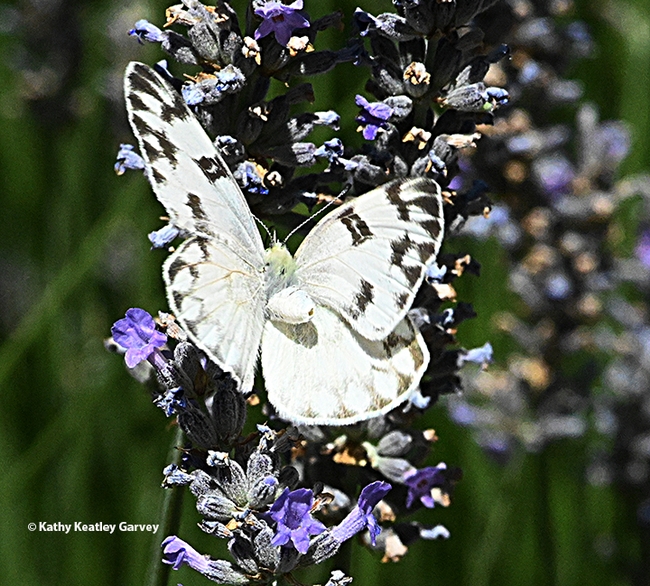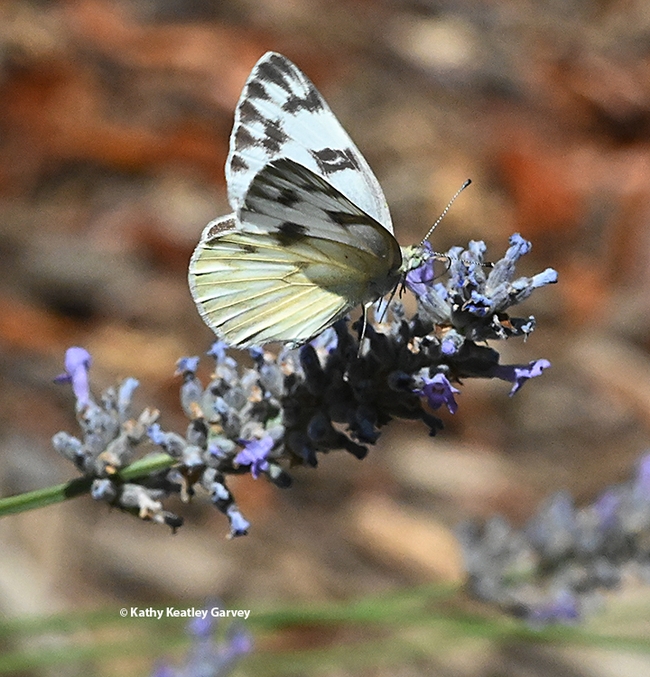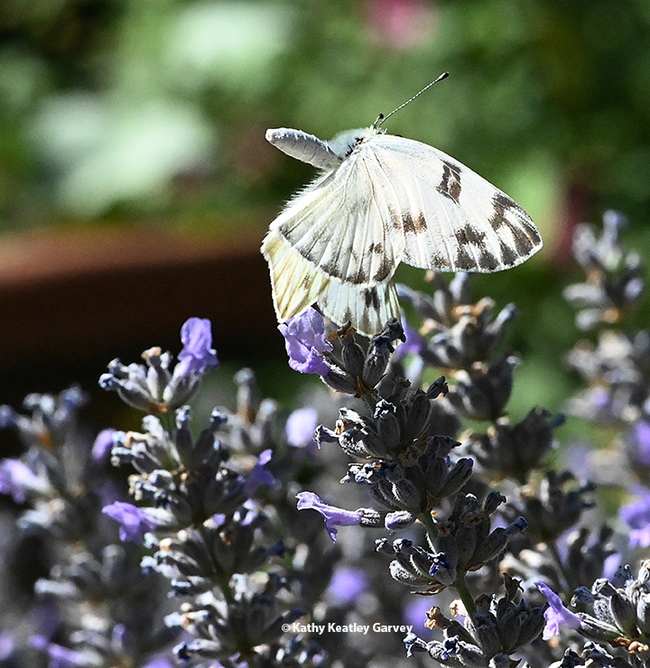Have you seen any Checkered White butterflies lately?
They're quite common in the southern United States and northern Mexico (they're known as the Southern cabbage butterfly), but one CW fluttered through our pollinator garden in Vacaville, Solano County, Calif., on June 23.
It's in the same family, Pieridae, as the cabbage white butterfly, Pieris rapae.
This one, a female Pontia protodice, as identified by butterfly guru Art Shapiro, UC Davis distinguished professor of evolution and ecology, seemed to like our lavender.
"There was one laying eggs at Gates Canyon (Vacaville) two weeks ago," Shapiro noted. "This is an immigrant, which occasionally overwinters here--not very recently, though. It lives in the desert, both in SoCal and in Nevada. I don't know which direction these are coming from."
He reported two recently at Lang Crossing (Nevada County) on the Sierran West slope at 5000 feet. "This is probably a significant incursion."
He saw "scads of them" on June 30 in Rancho Cordova (Sacramento County)--clearly breeding there!"
The Checkered Whites "tend to fly in a straighter line than rapae, like it's late for an important date," he quipped. The females have more extensive markings than the males.
On his website, Art's Butterfly World, he points out that:
"In the 1970s this species was often abundant at low elevation along the transect, overwintering only locally and sporadically-mostly on dredge tailings along the American River. It has since become much rarer and in most years is seen only in September and October. At Sierra Valley it overwinters unpredictably but colonizes each year from the desert in May or June, and usually becomes common by late summer. It has been recorded at all sites but is not a permanent resident at any of them at this time!"
"A highly vagile species, the Checkered White breeds on a great variety of Brassicaceous plants, preferring smaller and unsucculent species such as Peppergrasses (Lepidium, but L. latifolium is unpreferred), Tumble Mustard (Sisymbrium altissimum), and the short-lived perennial Hirschfeldia incana (formerly called Brassica geniculata). The eggs are orange, laid conspicuously near the top of the plant, and the larvae, which are striped lengthwise in whitish yellow and greenish gray, feed primarily on buds, flowers and fruit. However, eggs are also often laid on small rosettes, especially if the larger plants in the area are senescent. This is overwhelmingly a species of grassland and steppe and occurs in wooded areas only along roadsides."
Shapiro, who has been monitoring the butterfly population of central California since 1972, says the Checkered White adults visit mustards, composites, legumes "and almost anything else; they are often abundant in irrigated alfalfa and visit its flowers freely. Males patrol in host-plant areas and often mate with teneral females."
Attached Images:

A female Checkered White butterfly, Pontia protodice (as identified by UC Davis distinguished professor Art Shapiro) nectars on lavender in Vacaville, Calif. (Photo by Kathy Keatley Garvey)

The female Checkered White spreads its wings. (Photo by Kathy Keatley Garvey)

A female Checkered White butterfly, Pontia protodice nectaring on lavender. (Photo by Kathy Keatley Garvey)

The female Checkered White showing a rejection behavior although no males are around. "The 'tail in the air' is a sexual rejection posture," says UC Davis distinguished professor Art Shapiro.(Photo by Kathy Keatley Garvey)